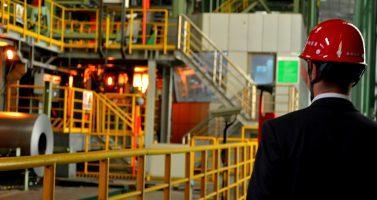Opening China markets for Sarlin
GreenStream has opened China markets to many Finnish small and medium sized companies. One of the main technology partners at the moment is Sarlin.
Countries need to accelerate climate action to meet the commitments of the Paris Agreement. Luckily there are various options for countries to choose from.
But how can we encourage countries to do more, faster, now? A recent report, commissioned by the Finnish Ministry of the Environment (and released in Finnish), looks at various fora under and close to the UN Climate Convention (UNFCCC).
As all eyes were focused on negotiations about the Paris Agreement, a lot of work on accelerating action immediately has gone unnoticed. There are at least seven existing fora and tools available.
The Technical Examination Process (TEP) explores policies, practices and technologies that could increase mitigation ambition. Organising Technical Expert Meetings (TEM) on subjects ranging from energy efficiency to land use, TEP has brought together representatives of countries and stakeholders to consider further climate action.
Lima-Paris Action Agenda (LPAA) catalyses, recognises and supports international co-operative initiatives (ICIs). Initiatives by non-state actors are documented in the NAZCA portal (NAZCA stands for the Non-State Actor Zone for Climate Action). UNFCCC Secretariat has highlighted exemplary climate projects under the Momentum for Change Initiative.
The Paris Outcome established two high-level champions to keep up and increase the momentum for climate action now. The first champions are France’s Laurence Tubiana and Morocco’s Hakima El Haite.
Finally, there are two events with a formal standing in the climate framework: high-level events and facilitative dialogues. In essence both provide a high-profile platform for countries and stakeholders to display, review and announce initiatives, hopefully encouraging stronger action.
Clearly climate action may have 99 problems, but lack of fora ain’t one. The report also looks at how existing fora could be reformed to be more effective and efficient. Proposals can be summarised in five baskets.
First, various fora might benefit from rationalisation and consolidation. LPAA, NAZCA and Momentum for Change operate more or less in the same field of climate initiatives. Similarly high-level events, facilitative dialogues and technical expert meetings have synergies. The emerging consensus seems to be to collect different tools under the umbrella of what is now called the global climate action agenda.
Second, this new action agenda needs a permanent structure and mandate. Galvanizing the Groundswell of Climate Actions has proposed a secretariat and a budget of about 25 million US dollars by 2020.
Third, climate initiatives need to be strengthened and complemented. For instance, less than half of existing mitigation initiatives have set a quantitative target and many lack sufficient institutional support. There is also a need to encourage more initiatives from the global South.
Fourth, the Technical Examination Process can be strengthened by increasing participation and bringing in key people and groups, for example national ministers or financing institutions. International expert meetings could be complemented by regional ones. The process also needs to focus more on implementation, barriers and ways to remove them.
Finally, the newly appointed high-level champions are ideally placed to advance the action agenda. However, to be successful, they need enough political, institutional and financial support. For instance, they should have sufficient staff at their disposal.
Institutions and processes may sound technical. However, underlying is a trillion-dollar question: will we able to accelerate action in the coming years to tackle the climate crisis.
After the tremendous success in Paris, countries will hopefully mobilise the necessary political will and resources to do more, faster, now.
Oras Tynkkynen
Tynkkynen was in charge of writing the report on behalf of Tyrsky Consulting. He has attended 16 UN climate conferences and has worked as Senior Advisor to the Finnish Innovation Fund Sitra, Climate Policy Specialist at the Prime Minister’s Office and Member of Parliament.
GreenStream is leading a consortium, consisting of VTT, Tyrsky Consulting, Indufor Oy and CC Law, which is supporting the Finnish government in the implementation of the Paris Agreement.
Date posted:
08/11/2016

GreenStream has opened China markets to many Finnish small and medium sized companies. One of the main technology partners at the moment is Sarlin.

Annual savings:
Electricity saving: 1926.6 MWh
Water saving: 18495 m3
Steam saving: 2652 t
Standard coal: 1068 TCE
Emission reduction: 2766t CO2e

GreenStream’s project saved 15 % of the compressed air related electricity costs annually for Delong Steel’s Xingtai steel mill. The technology provider was Sarlin.